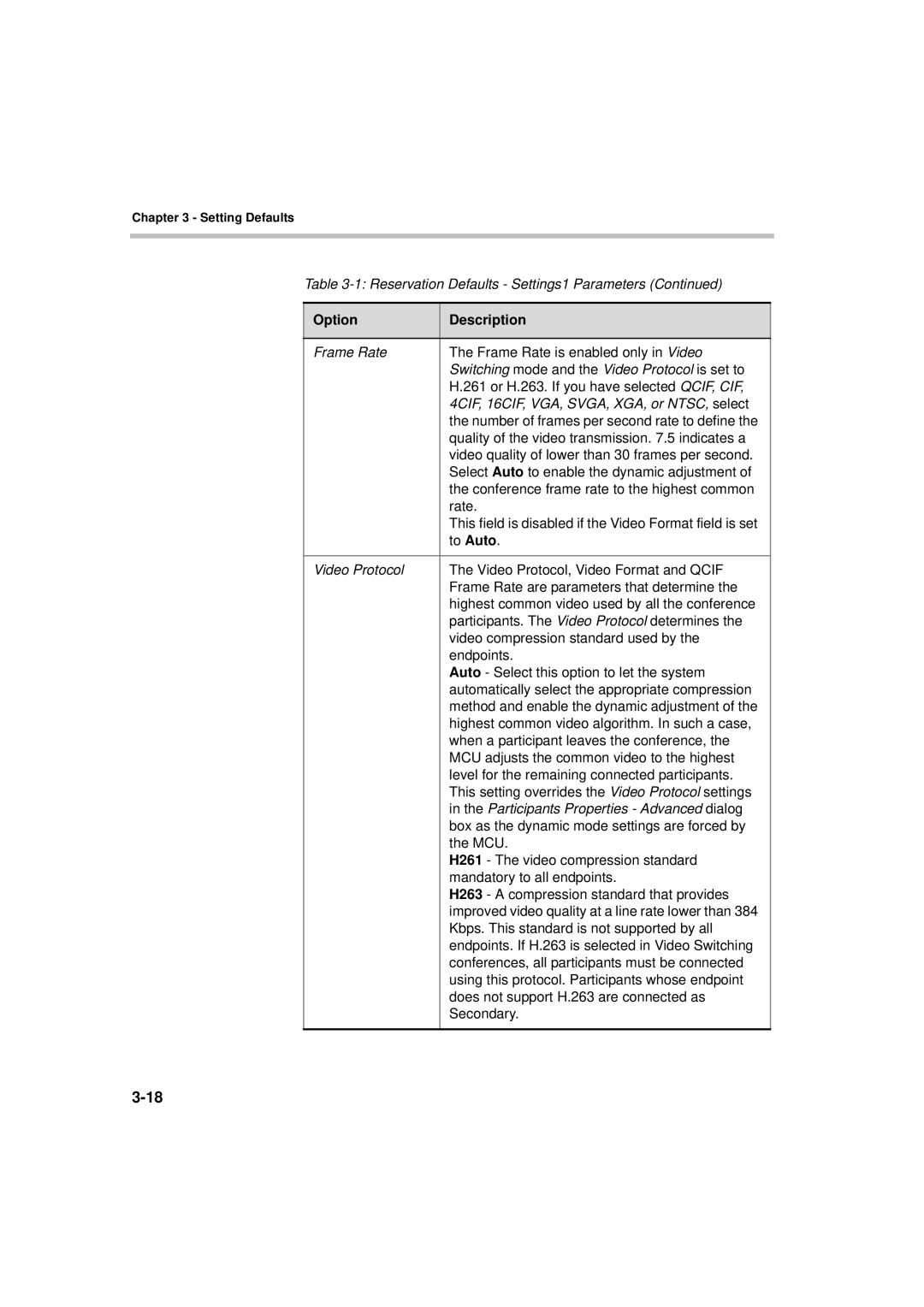Chapter 3 - Setting Defaults
Table
Option | Description |
|
|
Frame Rate | The Frame Rate is enabled only in Video |
| Switching mode and the Video Protocol is set to |
| H.261 or H.263. If you have selected QCIF, CIF, |
| 4CIF, 16CIF, VGA, SVGA, XGA, or NTSC, select |
| the number of frames per second rate to define the |
| quality of the video transmission. 7.5 indicates a |
| video quality of lower than 30 frames per second. |
| Select Auto to enable the dynamic adjustment of |
| the conference frame rate to the highest common |
| rate. |
| This field is disabled if the Video Format field is set |
| to Auto. |
|
|
Video Protocol | The Video Protocol, Video Format and QCIF |
| Frame Rate are parameters that determine the |
| highest common video used by all the conference |
| participants. The Video Protocol determines the |
| video compression standard used by the |
| endpoints. |
| Auto - Select this option to let the system |
| automatically select the appropriate compression |
| method and enable the dynamic adjustment of the |
| highest common video algorithm. In such a case, |
| when a participant leaves the conference, the |
| MCU adjusts the common video to the highest |
| level for the remaining connected participants. |
| This setting overrides the Video Protocol settings |
| in the Participants Properties - Advanced dialog |
| box as the dynamic mode settings are forced by |
| the MCU. |
| H261 - The video compression standard |
| mandatory to all endpoints. |
| H263 - A compression standard that provides |
| improved video quality at a line rate lower than 384 |
| Kbps. This standard is not supported by all |
| endpoints. If H.263 is selected in Video Switching |
| conferences, all participants must be connected |
| using this protocol. Participants whose endpoint |
| does not support H.263 are connected as |
| Secondary. |
|
|
